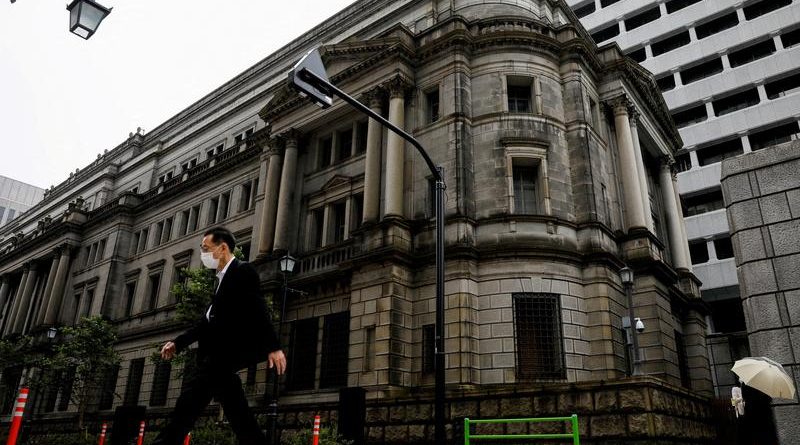Japan govt to consider revising joint statement with BOJ – sources
TOKYO (Reuters) -The Japanese government will consider revising next year a joint statement it signed with the Bank of Japan (BOJ) in 2013 that commits the central bank to meeting a 2% inflation target as soon as possible, sources told Reuters.
The revision, if made, would be done after a new BOJ governor is appointed in April, they said, a move that may heighten the chance of a tweak to incumbent governor Haruhiko Kuroda’s ultra-loose monetary policy.
There is no consensus within the government on what changes could be made, as much will depend on the views of the new BOJ governor, said four government and ruling party officials with knowledge of the matter.
But some officials of Prime Minister Fumio Kishida’s administration are keen to revise the decade-old statement that focuses on steps to beat deflation – a goal that has become out of sync with recent rises in inflation, they said.
“Given we’ll have a new BOJ governor, there will likely be a new statement,” one of the government officials said. “But there’s no decision yet on what a new one could look like,” the source said. A second official echoed that view.
Kyodo news agency reported on Saturday that the government is set to revise the joint statement to make the BOJ’s inflation target a more flexible goal, with some leeway.
The yen jumped 0.5%, the Nikkei stock average fell 1% and Japanese government bonds came under selling pressure on Monday as investors took the news as heightening the chance of a stimulus withdrawal.
When asked about Kyodo’s report, Chief Cabinet Secretary Hirokazu Matsuno told reporters on Monday there was no truth the government is set to revise the statement.
SHIFTING FOCUS
Under strong pressure by then Prime Minister Shinzo Abe to take bolder steps to beat deflation, the BOJ signed the joint statement with the government in 2013 and committed itself to achieve its 2% inflation target “at the earliest date possible.”
The statement also laid out the role the government would play, such as putting the country’s finances on a sound footing, and undertaking deregulation and structural reforms to boost the economy’s growth potential.
While inflation has exceeded the BOJ’s 2% target for seven straight months in October, Kuroda has called for the need to maintain ultra-easy policy until wages rise more. The BOJ is set to leave monetary settings unchanged at a two-day meeting ending on Tuesday.
But markets are rife with speculation the BOJ could tweak yield curve control (YCC) – a controversial policy combining a negative short-term rate target with a 0% cap on the 10-year bond yield – when Kuroda’s second, five-year term ends in April.
Sources have told Reuters that debate over how to remove the BOJ’s yield cap could gather pace next year, provided wages perk up and major economic risks remain contained.
Kishida’s administration has seen approval ratings plunge on growing public anger over the rising cost of living, as the BOJ’s ultra-low interest rate policy fuels a yen plunge that boosts import costs.
Former BOJ Deputy Governor Hirohide Yamaguchi, who is considered a candidate to succeed Kuroda, told Reuters the central bank must stand ready to raise its yield target if the economy can withstand overseas risks.
“There’s a chance core consumer inflation may stay around 3-4% for a fairly long period,” Yamaguchi said. “Once inflation expectations become entrenched, it’s very hard for central banks to control them. That’s a risk the BOJ should be mindful of.”
Source: Read Full Article



